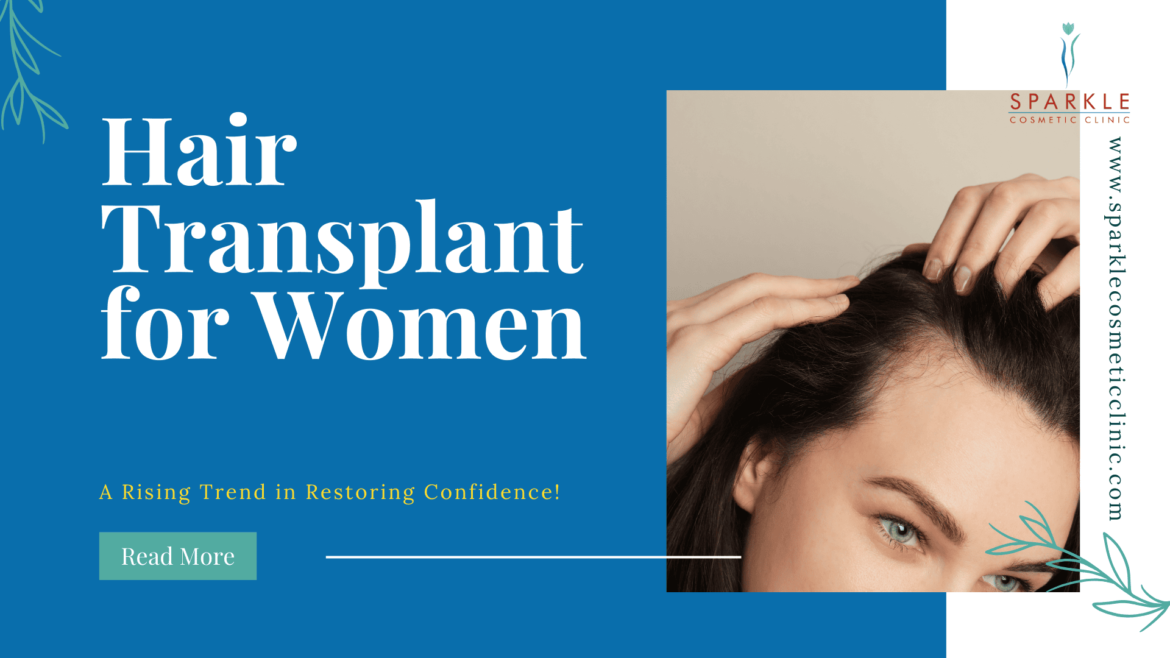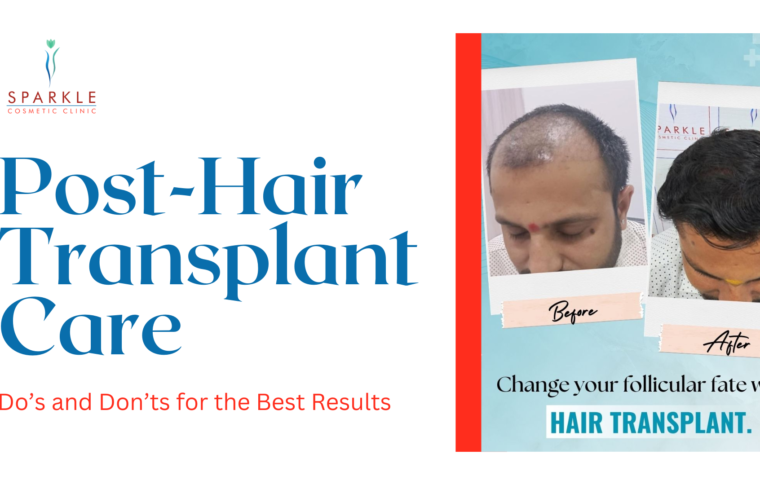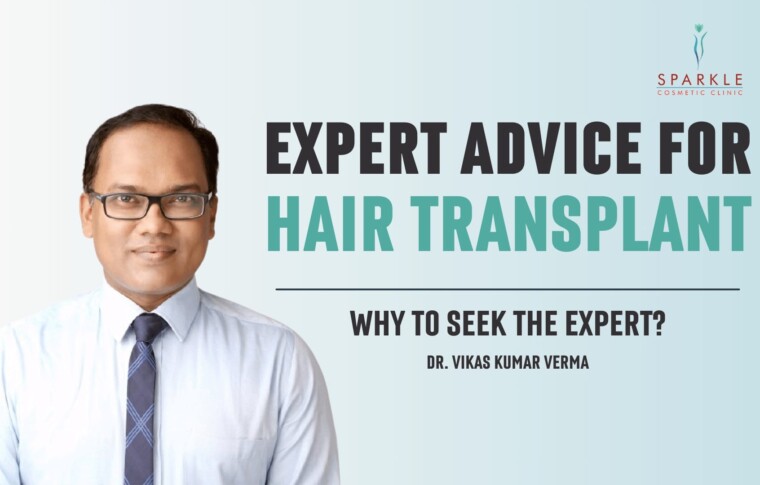Hair loss is no longer a concern that only men face. For years, women have struggled with thinning hair, balding patches, and the emotional toll that accompanies it. However, the rise in awareness, coupled with advancements in medical technology, has made hair transplants a highly effective and popular solution for women seeking to restore their confidence. In this blog, we’ll explore why hair transplants for women are becoming a growing trend, the factors contributing to female hair loss, and how the procedure can significantly enhance both appearance and self-esteem.
Understanding Female Hair Loss: Why It Happens
Hair loss in women is a common but often misunderstood condition. While it’s often associated with men, women are equally susceptible to thinning hair and baldness. The causes of hair loss in women can be complex and varied, but they typically fall into one of the following categories:
Genetics (Female Pattern Baldness)
Just like men, women can inherit a genetic predisposition to hair thinning, often referred to as female pattern baldness (FPB). This form of hair loss typically causes thinning across the scalp rather than creating distinct bald spots.Hormonal Changes
Hormonal shifts, especially those related to pregnancy, childbirth, and menopause, are major contributors to female hair loss. The dramatic changes in estrogen and progesterone levels during these phases can cause hair follicles to enter a resting phase, leading to hair shedding.Health Conditions
Certain medical conditions like polycystic ovary syndrome (PCOS), thyroid disorders, and autoimmune diseases can disrupt hair growth. Additionally, deficiencies in iron, protein, or other nutrients can also lead to thinning hair.Stress and Lifestyle Factors
Physical or emotional stress, rapid weight loss, and lifestyle factors like poor diet, lack of sleep, or smoking can all contribute to hair thinning or shedding in women.Chemical Treatments and Hair Damage
Frequent use of chemical treatments, such as coloring, perming, or straightening, can weaken the hair shaft and cause hair breakage or thinning. Excessive heat styling and harsh treatments can also contribute to hair damage over time.
Why Hair Transplants Are Becoming Popular Among Women
For many women, hair loss is not just a physical issue; it can have a profound impact on their self-confidence and mental well-being. The decision to undergo a hair transplant is often a life-changing one. The following factors explain why hair transplants are becoming an increasingly popular choice for women dealing with hair loss:
1. Non-Invasive and Natural-Looking Results
Hair transplant techniques, particularly Follicular Unit Extraction (FUE), have evolved significantly. Modern FUE procedures involve harvesting hair follicles from areas with dense hair growth (typically the back or sides of the scalp) and transplanting them into thinning or balding areas. This minimally invasive method offers natural-looking results that seamlessly blend with the surrounding hair. The ability to achieve a fuller, healthier head of hair with little downtime has made hair transplants an attractive option for women.
2. Long-Term Solution
Unlike temporary solutions like wigs, hair extensions, or topical treatments, hair transplants provide a permanent solution to hair loss. Once the transplanted hair follicles take root and begin to grow, they continue to thrive for the long term, giving women a lasting solution to their thinning hair.
3. Restoring Confidence
Hair loss can take a toll on a woman’s self-esteem, leading to feelings of embarrassment, self-consciousness, and even depression. A successful hair transplant restores not only the physical appearance of a full head of hair but also emotional well-being. Many women report a significant boost in their confidence and self-image post-procedure, which improves their overall quality of life.
4. Customizable to Individual Needs
Every woman’s hair loss pattern is unique, and so is every hair transplant procedure. A skilled hair transplant surgeon tailors the procedure to the patient’s specific needs, considering factors such as hair color, texture, and the natural hairline. This personalized approach ensures that the results are both aesthetically pleasing and effective.
5. Improved Technology and Techniques
Advancements in hair restoration technology, such as robotic-assisted FUE, have made the procedure more efficient and accurate than ever before. These innovations ensure that the transplant is as precise as possible, minimizing the risk of complications and improving the overall outcome.
The Hair Transplant Process for Women
If you’re considering a hair transplant, understanding the process will help you feel more confident and prepared. Here’s a step-by-step guide to what you can expect:
Step 1: Initial Consultation
Your journey begins with a consultation with a qualified hair transplant specialist. During this meeting, the surgeon will assess your hair loss pattern, discuss your medical history, and evaluate the health of your scalp. You’ll have the chance to ask questions, voice concerns, and set realistic expectations for the procedure.
Step 2: The Procedure
On the day of the procedure, the surgeon will carefully harvest hair follicles from a donor area (usually the back or sides of the scalp) using a specialized technique. The follicles are then transplanted to the areas with thinning or no hair. The entire procedure can take several hours, depending on the extent of the transplant.
Step 3: Recovery and Aftercare
Post-procedure recovery for women is relatively straightforward. You may experience some mild discomfort, swelling, and redness in the treated areas, but this typically subsides after a few days. Your surgeon will provide detailed aftercare instructions to ensure proper healing, such as avoiding touching or scratching the transplanted area and using prescribed medications.
Step 4: Hair Growth and Results
The transplanted hair will fall out within the first few weeks, but this is completely normal. New hair will begin to grow after a few months, and the full results of your hair transplant will become visible in 6–12 months. The transplanted hair will continue to grow naturally and should last for a lifetime.
Challenges and Considerations for Women
While hair transplants are a highly effective solution, there are some challenges women may face when considering the procedure. These include:
Cost: Hair transplants can be expensive, and insurance typically does not cover cosmetic procedures. It’s important to consider the financial investment before proceeding.
Expectations: Hair transplants provide long-term results, but it’s important to have realistic expectations. Full results can take time, and some women may require follow-up treatments to achieve optimal coverage.
Surgical Risks: As with any surgical procedure, there are risks associated with hair transplants, including infection, scarring, or poor hair growth. A consultation with an experienced surgeon will help mitigate these risks.
Conclusion: Embrace the Change
Hair loss in women is a common concern, but it no longer has to be a source of frustration or embarrassment. Hair transplants offer a permanent and effective solution to restoring both your hair and your confidence. With advancements in technique and technology, hair restoration has become more accessible and successful than ever before.
If you’re struggling with hair loss and are considering a hair transplant, Sparkle Cosmetic Clinic is here to help. Our experienced team of specialists will guide you through every step of the process, ensuring a safe and successful hair restoration journey.
Ready to take the first step toward a fuller, more confident you? Contact Sparkle Cosmetic Clinic today to schedule your consultation and discover how a hair transplant can transform your life!




